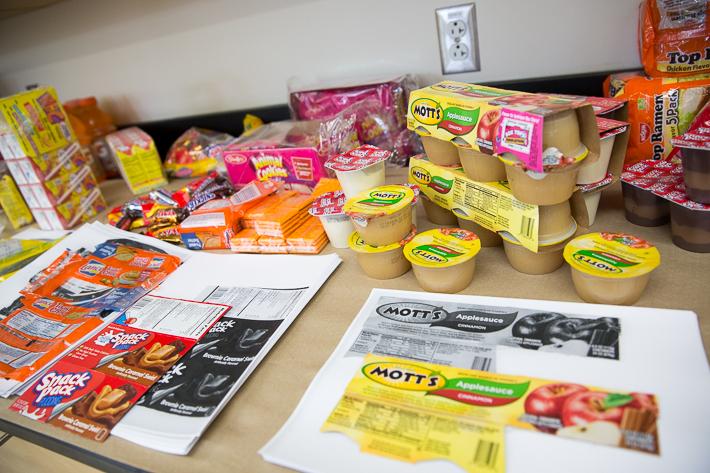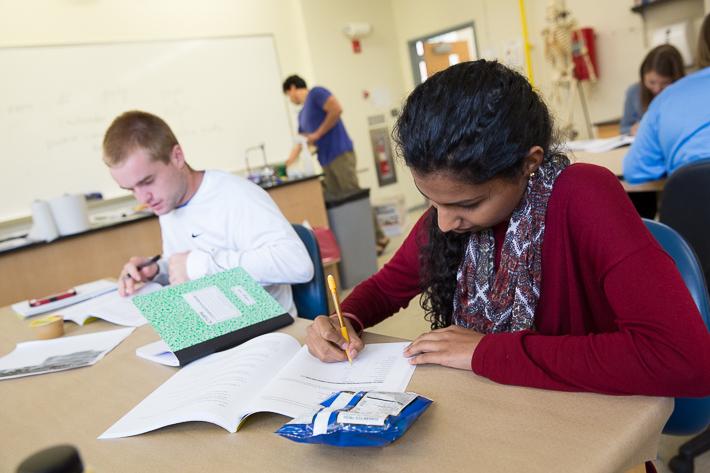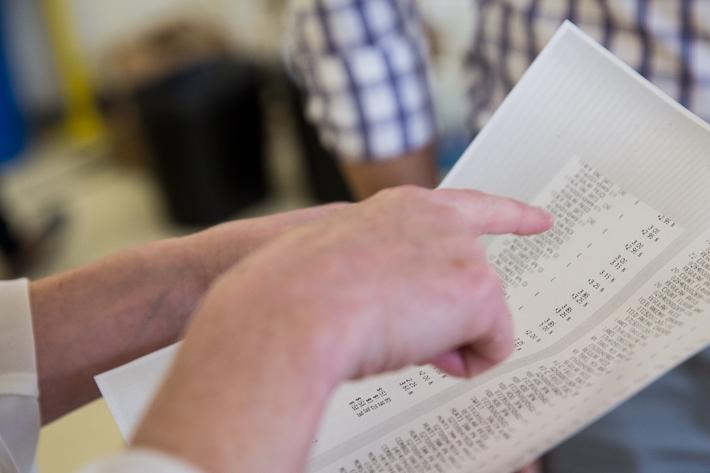By James Irwin
It’s decision time at the grocery store: the cheaper item or the healthier one?
The debate is longstanding: inexpensive or healthy? Economics or wellness? These are challenges people face when they try to eat healthy but also affordably, according to Tara Scully, teaching assistant professor of biological sciences.
“You see the impact of what you can buy for a dollar at Family Dollar vs. Whole Foods,” she said. “And Family Dollar seems a bit more appealing financially for many people, even though it isn’t as healthy.”
A new wrinkle to a general education course in the Columbian College of Arts and Sciences aims to explore this issue. Sessions of Biology of Nutrition and Health this semester are focusing on food, how the body uses it, and major dietary-related issues, including diabetes, heart disease and celiac disease. Two of the classes, participating in an academic-service learning pilot program, will work with community organizations later this fall as they tackle socioeconomic issues related to diet, health and wellness.
Though chemistry and biology classes have incorporated service learning in the past, Biology of Nutrition and Health is the first service learning natural science course in recent years, according to Amy Cohen, executive director of the Center for Civic Engagement and Public Service.
“What we’ve been trying to do is provide students with information about biology that relates to their lives on a daily basis,” Dr. Scully said. “We educate ourselves throughout our entire lives for jobs where we can make money. We don’t do the same for our health. And yet it accumulates—you don’t wake up tomorrow morning and have a heart attack at the age of 18, but what you eat at the age of 18 impacts you having a heart attack at 40.”
Lab sessions of Biology of Health and Nutrition focus on breaking down the components of grocery store items. "Today, for example, they are looking at nutritional labels and testing the contents—the macromolecules within the food," said Jimmy Munoz, lab supervisor at the Mount Vernon Campus’ Acheson Science Center.
A science class for non-science majors
As a general education requirement, science and non-science majors alike are enrolled in the course, which includes lesson plans dedicated to testing the composition of popular, cheap grocery store items like granola bars, snack packs and Ramen Noodles and discussing healthy foods and ways to prepare them.
“We’re breaking down nutrition labels and looking at the different types of fats and how different carbohydrates affect our body,” said Libby Wuller, a sophomore in the School of Media and Public Affairs. “I used to just look at numbers. Now I am spending more time analyzing the label.”
Many details in the course go beyond identifying healthy foods. The real benefit, Dr. Scully said, is explaining their composition and how that affects the body.
Fruits and vegetables, for example, contain cellulose, which the body cannot break down. But cellulose binds toxins and cholesterol, which helps to lower bad cholesterol levels. It also helps you feel full longer. High fructose corn syrup? That’s derived from corn starch (a chain of glucose) and often used in processed foods. Production of high fructose corn syrup includes enzymes to create a simple sugar called fructose (naturally found in fruits and berries) at a highly concentrated level. Like any other ingredient, if it’s higher on the label—soda is an example—there’s more of it in the product.
“Some of this seems simple, but it’s also important to realize,” said Jimmy Munoz, lab supervisor at the Mount Vernon Campus’ Acheson Science Center. “Here we are with students who are 18, 19, 20 years old, and we’re a little behind because there are many people at that age who don’t know the importance of eating healthy—they don’t know what they’re eating every day.”
The economics of nutrition
Creating value for healthy eating, Mr. Munoz said, is critical. That’s the service focus. One organization Dr. Scully has been working with, Common Threads, sends volunteers into elementary school classrooms to teach children living in underserved communities how to cook healthy meals. She envisions students in Biology of Health and Nutrition—broken up into teams of eight—supporting that education as they work with children, community groups and after-school programs in the Washington, D.C., area.
Ms. Wuller’s group has been creating lesson plans based on what they’ve been learning in the classroom and lab.
“This is not just about reading a textbook for the purpose of passing a test—I have to learn this material because I have to teach it to someone,” Ms. Wuller said. “It matters what we eat, and I think a lot of kids aren’t taught that piece of education. They may be in a biology class in their schools, but they may not be learning about how the biology translates to their health.”
Academic-service learning classes have increased at the university in recent years. GW offered 41 such classes during the 2012-13 academic year. It will offer 70 from May 2014 to May 2015, according to Ms. Cohen. Applying science to a thought-provoking topic—in this case using biology to explain the value of a healthy diet—is an example of making the content more relevant, Dr. Scully said.
“It really isn’t easy to eat healthy,” she said. “Changing the mindset of the country in the future regarding how we value healthy foods, and maybe also making it more affordable, would be an amazing achievement. I think we can do that through these service-learning courses.”










